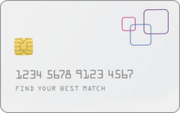The content on this page is accurate as of the posting date; however, some of the offers mentioned may have expired.
The crime of “skimming” as it pertains to a credit card refers to the illegal copying of information off the magnetic strip that extends along the back side of a credit, debit, ATM or other payment card. Once the criminals have skimmed the necessary data from a card, they put it onto a fake card and use it to run up charges in the victim’s name. Card skimming also facilitates identity theft and identity fraud.
In order to skim information from unsuspecting cardholders, scammers use easy-to-obtain electronic equipment. Thieves outfit ATM terminals and other point of sale card swipe points such as gas station pumps, with small card reading devices that can read the magnetic strip of every card that is inserted into the slot and store all the sensitive data it reveals. These electronic devices that skim card details can also be carried by hand and used by dishonest store personnel.
The crimes of skimming has been on the rise in America as of late and especially spikes during certain times of the year such as around the holidays when there is a distinct increase in credit card activity. Heavily-trafficked tourist destinations are also often targeted by individuals looking to steal credit card information because of the high amount of economic activity in those areas. The Secret Service has reported that, armed with counterfeit debit and credits, crooks make nearly $8 million in fraudulent purchases annually.
While you are technically vulnerable to skimming every time you use a card to pay for a purchase, there are a few things you can do to lessen the chance of your becoming a victim:
Pay Attention
Whenever you go to an ATM to withdraw money, take a moment to examine the point where you insert your card to make sure it does not look loose, tampered with or bear scratches or sticky residue that could have been left behind by tape or adhesive. Also be wary of the keypad – check to make sure there is not a second one overlying the keypad on the machine.
Protect Your PIN
Cover the keypad with your free hand as you punch in your PIN number or secret code. This will help obstruct the view of any hidden cameras or strangers lurking and looking over your shoulder.
Indulge Your Instincts
If you feel there is something funny about the situation, don’t shake it off and proceed with the transaction even if you are in a hurry. Instead, trust your gut and walk away. Also, if something is amiss with your account – if it is declined and you don’t believe that it should have been, for example – contact the card issuer immediately.
Go Over Your Balances
Keep an eye on all your statements for fraudulent activity. Although there are federal laws in place to protect consumers from being held financially responsible for fraudulent and unauthorized activity on their account, most banks require that cardholders notify them immediately upon discovering that a fraudulent transaction has occurred.






